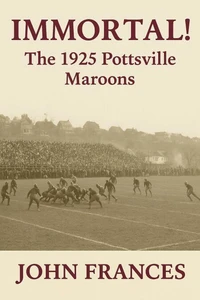Asbury Park: A City That Sings is the story of a place that has lived more lives than most cities ever dare. Founded in the 1870s as a seaside utopia, Asbury Park was born with prayer in its lungs and ambition in its bones. She grew into the belle of the Jersey Shore, her boardwalk alive with carousels, grand hotels, and summer families who believed the good times would never end. Music floated from brass pavilions and jazz clubs on Springwood Avenue, postcards traveled the country, and the ocean applauded with every wave.
But beneath the glitter, cracks spread. Segregation divided the city. The Morro Castle fire in 1934 filled her skies with smoke. The Depression dimmed her lights. And by the summer of 1970, the cracks split wide open: riots gutted Springwood Avenue, families fled, and Asbury Park was left scarred and hollow. The grand hotels stood empty, the boardwalk sagged, and headlines branded her a ruin. And yet, the city refused to be silent.
The Stone Pony roared with guitars and saxophones, birthing the Jersey Shore sound. Bruce Springsteen, Southside Johnny, Steve Van Zandt, and the E Street Band turned everyday heartbreak into anthems, carrying Asbury's name to the world. Madam Marie read fortunes from her booth long after the rides had stopped spinning. In the darkest years, artists, musicians, and the LGBTQ+ community planted seeds of resilience in abandoned storefronts and forgotten streets.
Slowly, the city breathed again. Developers returned, new hotels rose, and the boardwalk filled with murals, parades, and festivals. Hurricane Sandy tested her resolve, but she endured. Today, Asbury Park is alive once more-vibrant, contradictory, complicated. Luxury condos gleam by the ocean while the west side still waits for promises to be kept. Pride flags wave openly, new music fills the air, and Bruce sightings at The Stone Pony keep the legends alive.
This is not a textbook. It is a biography-of a city that has been beautiful and broken, adored and abandoned, ruined and reborn. A city that carries every version of herself at once: the postcards, the riots, the empty hotels, the painted murals, the voices rising from street corners and stages.
Asbury Park: A City That Sings is the story of a place that has lived more lives than most cities ever dare. Founded in the 1870s as a seaside utopia, Asbury Park was born with prayer in its lungs and ambition in its bones. She grew into the belle of the Jersey Shore, her boardwalk alive with carousels, grand hotels, and summer families who believed the good times would never end. Music floated from brass pavilions and jazz clubs on Springwood Avenue, postcards traveled the country, and the ocean applauded with every wave.
But beneath the glitter, cracks spread. Segregation divided the city. The Morro Castle fire in 1934 filled her skies with smoke. The Depression dimmed her lights. And by the summer of 1970, the cracks split wide open: riots gutted Springwood Avenue, families fled, and Asbury Park was left scarred and hollow. The grand hotels stood empty, the boardwalk sagged, and headlines branded her a ruin. And yet, the city refused to be silent.
The Stone Pony roared with guitars and saxophones, birthing the Jersey Shore sound. Bruce Springsteen, Southside Johnny, Steve Van Zandt, and the E Street Band turned everyday heartbreak into anthems, carrying Asbury's name to the world. Madam Marie read fortunes from her booth long after the rides had stopped spinning. In the darkest years, artists, musicians, and the LGBTQ+ community planted seeds of resilience in abandoned storefronts and forgotten streets.
Slowly, the city breathed again. Developers returned, new hotels rose, and the boardwalk filled with murals, parades, and festivals. Hurricane Sandy tested her resolve, but she endured. Today, Asbury Park is alive once more-vibrant, contradictory, complicated. Luxury condos gleam by the ocean while the west side still waits for promises to be kept. Pride flags wave openly, new music fills the air, and Bruce sightings at The Stone Pony keep the legends alive.
This is not a textbook. It is a biography-of a city that has been beautiful and broken, adored and abandoned, ruined and reborn. A city that carries every version of herself at once: the postcards, the riots, the empty hotels, the painted murals, the voices rising from street corners and stages.

 , qui est-ce ?
, qui est-ce ?